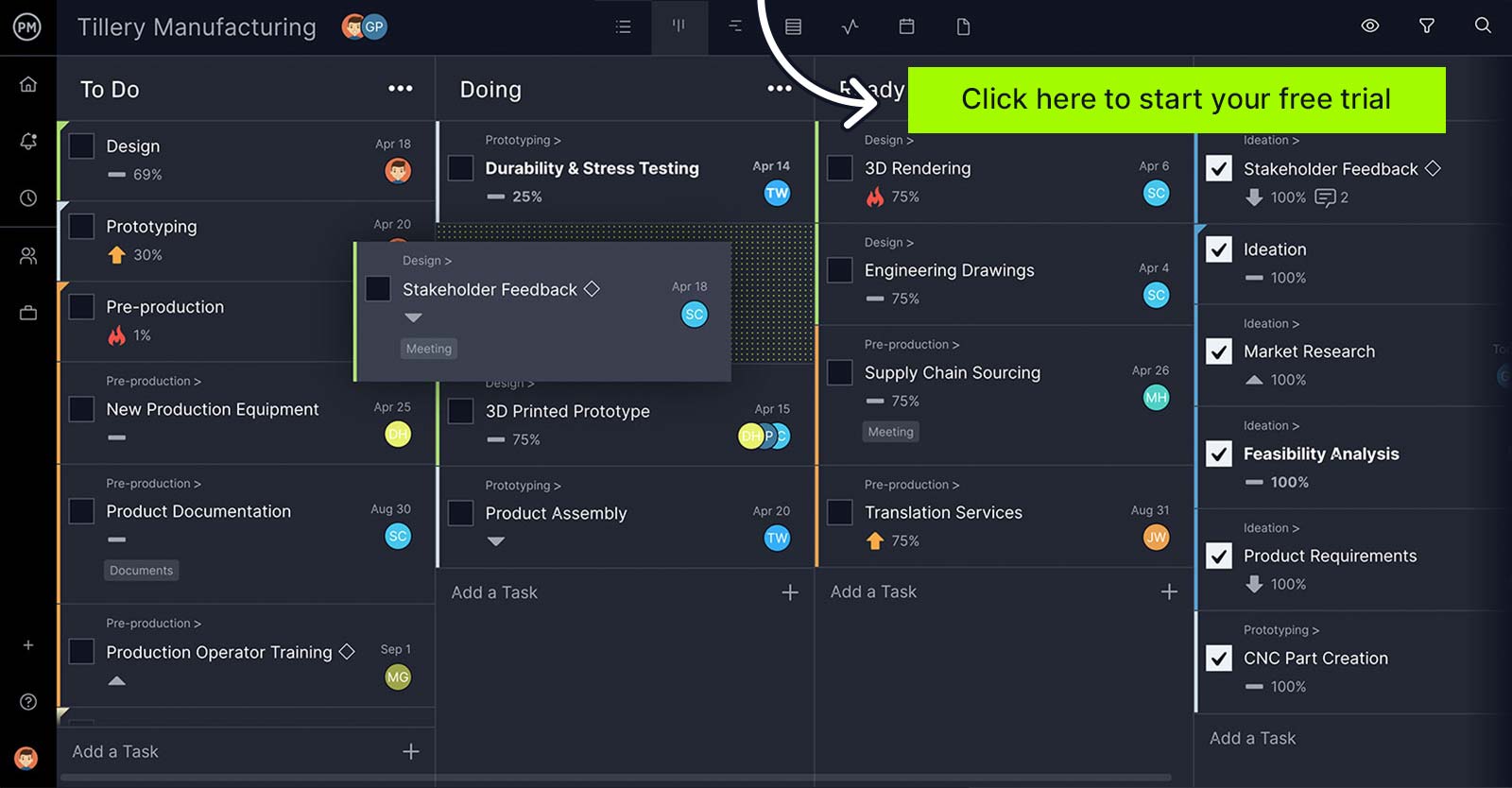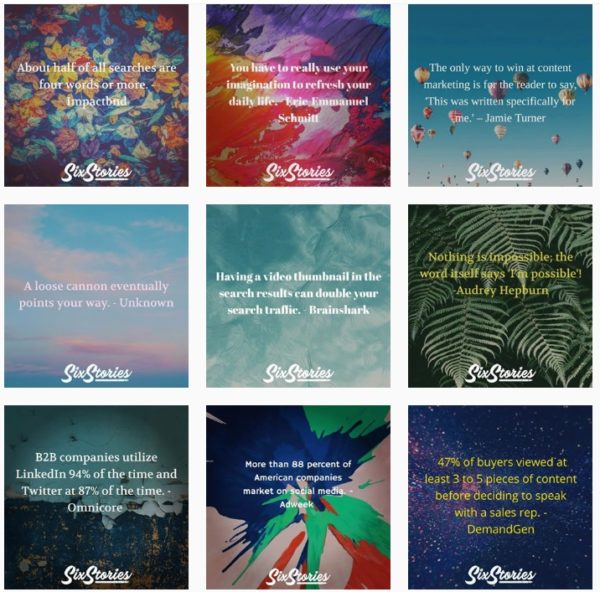If you’re interested in productivity at work (and in your personal life), you’ve likely heard about batching. Batching is the act of grouping tasks together, so you do them all at once, instead of switching between tasks that take place in different programs or areas.
An easy example of this task management method would be a photographer resizing all her latest wedding photos at once, instead of editing and resizing each one individually. In most cases, it saves time and energy to batch similar to-dos together.
While batching is handy in many areas, it can also lead to burnout in others. Below are some instances where batching can help you get more done, as well as some when it’s not helpful, where you should focus on doing one single thing at a time.
When Batching is Helpful
To be more efficient at batching, consider setting a timer on your phone, smartwatch or online. Set a countdown for the time you have for your batched tasks. Use an online task management tool to collect all your tasks for the day and organize them.

Be reasonable with your task management goals: it might be helpful to time yourself actually going through the tasks first before creating a countdown. That way you know how long it takes you on average.
This is the most useful area of batching that affects most of us. Instead of checking your email multiple times per day (or leaving it open all day and getting notifications each time you receive a new email) choose one-to-three periods throughout the day to completely go through your inbox.
Gmail and Gsuite have a few features that can help with this (as well as other email programs, like Outlook and Thunderbird). You can use a split-pane view to see all your new emails on one side. Then, once you click on one, the email opens on the other side of the screen so you can read it. This can help you save time when going through emails one by one since you don’t have to leave one screen to go back to the inbox to click on another email. Respond, archive, or delete all new emails.
To effectively batch email, go through every single email that you possibly can. Don’t avoid or procrastinate reading or responding to emails when you don’t want to spend the energy or time on it. Plowing ahead and getting it done will clear that mental to-do, freeing up your brain for other tasks.
Image Creation
If you are creating several similar images, consider doing them all at once. A great example of this is featured images for blog posts or social media images. If you have an editorial calendar with assigned blog post titles, you can create the featured images for each post ahead of time so the writer and editor don’t have to wait on the designer to finish each individual image when the post is ready to be published.
For social media images, use a blank template where text can be added, or have a set layout that makes it easy to change the background and text in the image. For my company’s Instagram account, we use a template on the Pablo by Buffer graphics editor and then create a bunch of images at once:

You can set your logo and it will appear in the same place with every new image. Then, you can choose from stock images for the background. Creating and scheduling a bunch of these at once helps us get it done and not worry about it until the batch is about to run out.
Article Editing
If you are a writer, content marketer or editor, you’ll likely need to spend time weekly editing pieces of content. When I was executive editor at Search Engine Journal, I would always batch edit new posts.
Each morning, I would go into the new submissions folder and edit posts for clarity, basic grammar and leave comments for the writer if there were areas that needed improvement or clarification. By doing the initial review of multiple articles at once, I was able to get “in the mode” of editing, making the process smoother.
It also can make you a better editor, as you get reminded of the basics to be checking for at the beginning of batching, allowing those “must-do” items to be checked off your list as you go through the remaining articles. If I was checking articles as they came in, many of the best practices we required of writers wouldn’t remain top of mind, likely leading to more errors and back and forth with writers as I caught more issues.
As you continue to batch tasks, you’ll learn what your volume of items is and what amount of time is needed before you find yourself losing interest or energy. That way, you know when to stop and when to schedule your next batching session so you can make sure you are at your best.
Brainstorming
If you want to think of a bunch of new ideas all at once, try a brainstorming batch session. This is perfect for thinking of new blog posts, business or product names or anything else where you can quickly come up with a list of ideas that you can then narrow down or tweak after you’re done. Brainstorm batching can also be done with multiple people, but it’s crucial to set a time limit and stick to it. Otherwise, it’s easy to get off track.
Meetings
Several professionals and lifestyle bloggers and coaches batch their meetings so their time isn’t interrupted. They chose specific days or blocks of time for meetings and don’t schedule outside of that time.
The Chrome/GSuite plugin Clockwise can help you with this using AI. You mark specific meetings as flexible, and it will automatically change them, so several meetings happen in one single block of time, instead of sporadically throughout the day.
If you use a meeting scheduler, you can also set availability parameters, so it only shows those looking to schedule with you set blocks of time that you have available.
When Batching Isn’t Helpful
For a few specific instances, batching isn’t helpful to those of us looking to get more done. Here are a few examples.
Highly Creative or Detailed Tasks
You can batch blocks of time to work on highly creative or detailed tasks, but it is near impossible to do several high mental capacity tasks in a row. Just like blocking off meeting time, you can block off “focus time” on your calendar for your high-level tasks.
However, don’t expect to write two 5,000-word eBooks or complete two presentations in that time. Stick to one project at a time, then split up your work with a low-level task or a break to rest and reset your brain.
New Tasks
For some people, if you are learning how to do something new, it can seem overwhelming to do it over and over again. If you were learning how to build a WordPress website and you didn’t know anything about it before, trying to make yourself build three in an afternoon would seem almost impossible.
Instead, when you’re learning a new process or task, count it as a high-level task and block out a specific chunk of time where you can finish one new project before eventually easing into multiple in a row. You can use the time blocking technique to set your calendar.
When You’re Tired
Again, this may not be the case for all people, but batching can take a lot of mental energy and precision. If you are tired or don’t feel up to the task, batching might not be a good idea. It could end up making you feel even more tired or frustrated.
After all, knowing I must schedule 30 social media posts sounds a lot more daunting when I have a headache or have already been working seven hours. Track your energy levels for a few weeks to see how you naturally get things done, and then schedule batch tasks when you are better able to handle them.
To learn more about scheduling around your energy at different times of the day, Do Less by Kate Northrup (targeted toward women and specifically mothers) and 168 Hours and Off The Clock by Laura Vanderkam are both good reads.
Batching can work in anyone’s life, no matter what you have to get done. Whether it’s preparing data reports or washing all the dirty laundry in your house, try to group similar tasks together to get it done faster with better accuracy and a higher completion rate.
Batching is a great way to optimize your time and get more done. Wouldn’t it be great if there was a tool that could do this at even a higher level? There is! ProjectManager is cloud-based project management software that streamlines your efforts and increases your productivity. Online Gantt charts make scheduling collaborative, kanban boards visualize workflow and a real-time dashboard monitors your progress as it happens and makes reporting on it a snap. See how easy it can be and take this free 30-day trial today.

